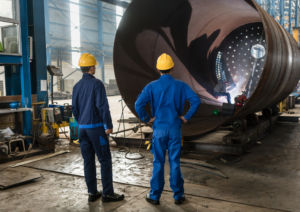The Southeast-Asian (SEA) green economy in 2021 was a mixed bag. The region shifted from a “challenges” to “solutions” paradigm, and key stakeholders took up arms and put their money where their mouth was.
Big businesses and government entities stepped up to take definitive action in efforts to combat climate change. However the COVID-19 pandemic also reinforced the need for stable supply chains and food security networks, while advocating for more sustainable energy sources and green infrastructure.
Across the board, different SEA nations fared sporadically with respect to advancing the green economy. Indonesia, for example, was one of the only two countries to commit to net-zero carbon emission goals.
Despite the growing pains of establishing and catalysing a green economy in SEA, there exists a bounty of potential gains in green investment opportunities ahead. These very same challenges present significant value for those who can find and take action on potential solutions such as the development of abundant and renewable energy resources such as geothermal, solar, and offshore wind.
Leveraging on this, companies can utilise private equity to scale capacity of low-carbon energy amid falling prices, and leverage decreasing costs to establish a new baseload energy source. Additionally, ASEAN private equity could also be channelled towards developing infrastructure in less developed countries, thereby reaping long-term rewards through the acceleration of sustainable infrastructure and practises via green construction, electrification, and modern grids.
Green capital is already present in SEA, but the caveat is that it is still in the early stages. The ideal win-win situation presents as one that fully utilises green capital to derive value for all stakeholders involved. Thus, it is crucial that we identify and earmark key sectors at play.
Key Sectors
1. Green energy
In relation to a green economy, investment opportunities open up due to the need for SEA to transition towards cleaner energy sources while maintaining energy security. The crux of this lies in pivoting away from fossil fuels and towards renewable and sustainable sources of energy, while developing infrastructure for grid modernisation and electrification.
Some key considerations to take note is that the development of this industry hinges on an overhaul of infrastructure and practises, which occupies a considerable amount of private equity investment and time. Potential projects worth keeping an eye out for would be SunSeap and Canopy Power from Singapore, the former which specialises in the development of solar photovoltaic systems, while the latter endeavours towards systems development in the form of smart grids and energy management.
2. Green construction and buildings
In regards to green construction and buildings, the idea is to integrate technology in order to minimise carbon emissions and maximise efficiency. An example of this comes in the form of Surbana Jurong, a global urban, infrastructure, and managed services consulting firm based in Singapore.
The company utilises digital platforms and the Internet of Things (IoT) to improve building efficiency. Combining data received from IoT sensors in their facilities, the company then models ideal energy usage in order to optimise systems operation and electricity consumption. This predictive model is scalable and can be adapted towards a city-wide smart-management level. Again, take note that capital investment from private equity is usually high in this sector, but the rewards more than make up for it in the long run.
3. Sustainable materials
In a region that suffers from worsening plastic waste consumption and increasing consumer discernment, there is a lofty need for recyclable plastic alternatives, sustainably packaged materials, and low-carbon building materials.
With a market composed largely of companies that go public via an Initial Public Offering (IPO) as opposed to private equity or investments from venture capitalists, there is a huge green investment niche that can be filled by ASEAN private equity moving forward.
Upcoming Sectors
If you’re an early adopter looking for upcoming green investment opportunities, pay attention to the following:
Sustainable food systems that take advantage of technology, data, and IoT to improve productivity and sustainability are huge unicorns in the market. As the region grows, SEA’s growing nutritional needs have to be met. In that regard, measures must be taken to increase sustainability adoption among smallholders critical to the agricultural change in the region. Potential projects such as Singapore’s eFishery, which uses technology to model feed times and reduce up to 35% of feed waste, is a great example of sustainable food systems. The company also uses an online marketplace to sell produce and offer financial backing for smallholders.
Natural conservation and restoration tackles the issues of climate change by proactively protecting precious natural resources. The running theme of making full use of technology is not lost here, as companies develop in-house devices to monitor forests and collect critical data about the ecosystem. Jejak.in, an Indonesian based company, works towards measuring, reporting, and verifying carbon sequestration through the use of smart devices. They also have an online marketplace that enables individuals and businesses to purchase carbon credits to offset their carbon footprint, in the fight against climate change.
Mitigating Existing Barriers with Private Equity
Through a mixture of blended financing from ASEAN private and public equity alike, adoption of stable long-term ESG standards can become the norm. The influx of private equity provides additional runway for national efforts and takes some of the pressure off respective governmental budgets.
Private equity alone is not enough, but paired with innovation, it has the potential to be a massive catalyst for change.





